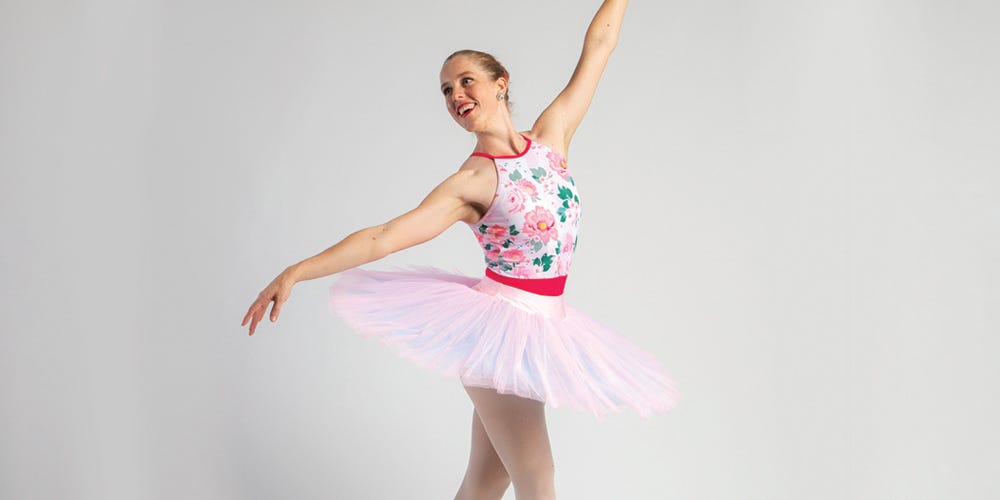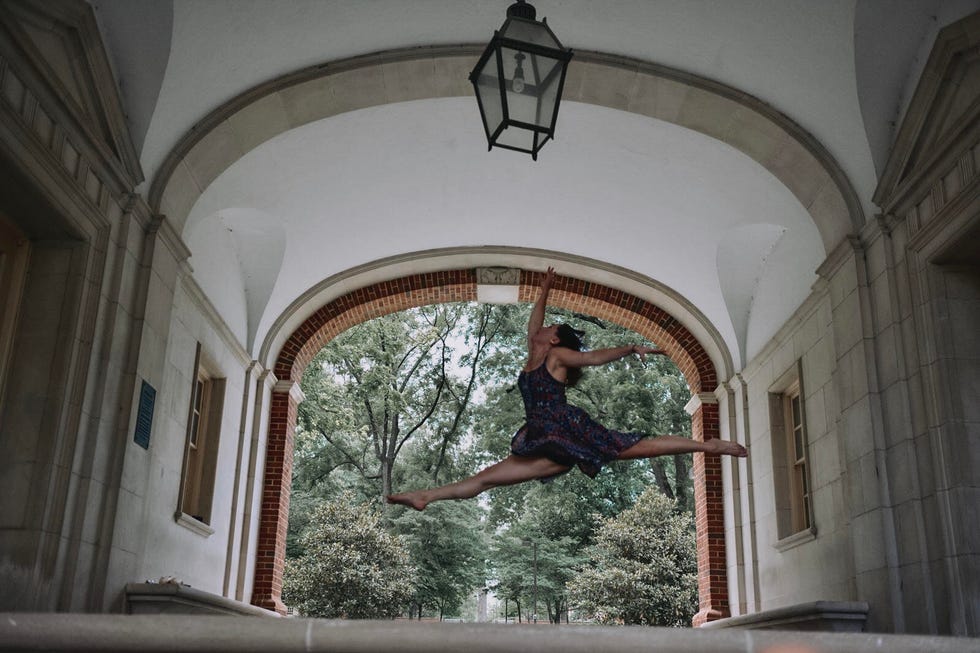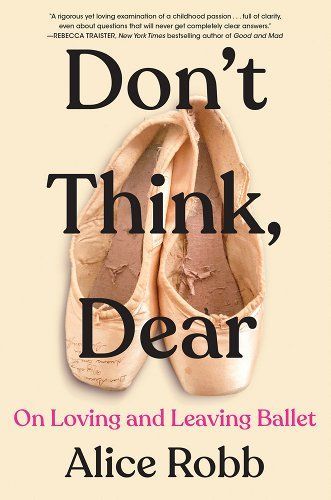As a child studying at the School of American Ballet, I supplemented my formal training with open ballet classes all over Manhattan. These studios were populated by a mix of aspiring professional dancers like me as well as grown-ups in their thirties, forties and beyond, who clearly had no hope of going pro. They baffled me.
As far as I was concerned, ballet was a calling—a sometimes-painful obsession that governed my after-school hours, my summers, my relationship with food and free time. One thing it wasn’t was fun. I couldn’t fathom why these adults—who I imagined could choose from all kinds of exciting activities, like watching R-rated movies or going to bars—would opt to spend a weekday evening practicing tendus and plies instead.
That was almost 20 years ago. Since then, adult ballet has exploded. During the Covid lockdown, star dancers like Tiler Peck began live-streaming free classes to thousands of students, including amateurs who might be intimidated by a traditional ballet environment. Miami City Ballet veteran Kathryn Morgan racked up almost 300,000 subscribers on her YouTube channel, where she posts themed ballet classes (her Harry Potter-inspired pointe class has been viewed over 100,000 times) and breaks down tricky steps like partnered pirouettes and promenade. Peck and Morgan are part of a cohort of dancers who, over the past several years, have helped demystify ballet—posting backstage selfies without perfect buns or pancake makeup and sharing rehearsal footage that would once have been closely guarded. Thanks to social media, even rarefied institutions have loosened their grip; even the New York City Ballet now posts tutorials inviting viewers to riff on Balanchine’s revered choreography.
Just as these resources were becoming available, millions of people, confined to their apartments, were reevaluating their priorities and embracing new risks: in a trend that continued into these semi-post pandemic YOLO days, we’re quitting stable jobs, rewriting dating checklists, and pursuing new hobbies, embarrassment be damned. Ballet classes, many discovered, offer both a strenuous workout and a salve for anxiety. The subtle yet difficult movements require both mental and physical focus, and there’s comfort in the rituals of the barre—tendus after pliés, frappés after fondus. Prominent studios across the country have risen to meet the demand, offering week-long adult intensives and even performance opportunities.
One dancer who has availed herself of these new resources is Allie Bishop, 34, who rediscovered her childhood passion for dance after stumbling on ballet accounts on Instagram seven years ago. She had just moved to “the middle of nowhere” for her job, and—looking for a way to fill the lonely hours after work—signed up for a ballet class at a local studio. Soon, she was a regular. “It’s stress relief,” Bishop says. With ballet, “I don’t feel like I’m working out, because I’m enjoying it so much.” She invested in private lessons, installed a barre at home, and built up enough strength to go on pointe and even perform in a local Nutcracker. One of the highlights of her ballet journey so far has been the week she spent in Salt Lake City at the artÉmotion adult intensive, where she got to learn solos from the classical repertoire, dance in a recital, and connect with other adult ballet students.
ArtÉmotion is the passion project of veteran Ballet West dancers (and stars of the short-lived, much-loved CW docu-series Breaking Pointe) Allison DeBona and Rex Tilton. The couple didn’t know what to expect when they launched the program in 2016, but “we had forty people, right off the bat,” DeBona says. “It was incredible.” Since then, it’s grown to serve 120 students across four levels, and offers jazz, contemporary, and acting classes as well as ballet. DeBona and Tilton also teach at Ballet West’s preprofessional academy, but say there’s something uniquely rewarding about working with adults. “We’re not looking at them as students, but as peers,” Tilton says. Without the pressure of trying to prepare them for a demanding professional career in a company, they can focus on growing their creative expression instead of perfecting their technique. “We were both professional for 15 years, and we run the room like it’s a professional class in a company,” DeBona says. But “we really want to take away that competitive environment. We want to bring it back to art.”
Cecelia Beam, who has been specializing in adult ballet education since the 1980s and now teaches adults through San Francisco Ballet’s school, also appreciates the mentality and life experience her students bring to the studio. “I have writers and physicians and photographers,” she says. “Some of my students are 80 years old.” Whereas pre-professional teenagers tend to be intensely self-critical, adults “generally find great beauty in what they’re doing.” They aren’t trying to gain acceptance into a certain summer program or placate an overzealous stage parent; they’re dancing purely for themselves, and challenging the notion that ballet is an all-or-nothing pursuit.
Like most one-time preprofessional students, my relationship with ballet, as an adult, is complicated. (So complicated that I just spent three years writing a book about it.) The movements feel like home, but—15 years after I officially quit—entering a ballet studio can still stir up old, painful feelings of failure and self-doubt.
So I was struck by the pure joy with which the adult beginners I interviewed spoke about ballet. “It takes you away from all your problems and puts you in an incredibly mindful state with your body,” says Julie Gill, who attended her first ballet class at 17—the age at which professional ballet dancers are signing their first contracts. After college, Gill got a full-time job as a software developer, but she lived for the evenings, when she would take ballet classes or rent empty studios to practice on her own. “It gives you a whole new world,” she says. Eventually, Gill quit her corporate job to teach other adult students, and now runs the four-day International Adult Ballet Festival in Miami.
“There’s something about ballet that is just very calming to my nervous system,” says Patricia Pyrka, who discovered ballet at 37 and now runs the blog, Ballet Misfits. “When I take a class in the morning, I keep that for the rest of the day.” Pyrka had always been athletic, but ballet offered “a completely new movement repertoire,” she says. “It was so fun to see what my body could do.”
Adult beginners sometimes face confusion and even stigma from the traditional ballet community. When Bishop began posting videos of herself dancing on Instagram, she sometimes received bullying DMs from pre-professional students. “I had a couple of dance pages re-posting videos making fun of me,” she says. “There were a couple of times I took my account back to private.”
But the two groups have a lot to learn from each other. With lower stakes and a stronger sense of self, the adults I spoke to had healthier boundaries around some of the toxic aspects of traditional ballet culture. When I asked Pyrka how she dealt with the pain of dancing on pointe, her answer surprised me: “If I had pain, then that meant something was off.” If a new step or pointe shoe hurt, she didn’t blame herself or try to ignore it; she took it as a sign to slow down or try a different approach. “I didn’t make any compromises there,” she adds firmly. As aspiring professionals, my classmates and I had assumed that pain was just part of the deal. We admired dancers who pushed through injuries, and even took a masochistic pride in blisters and bloody toes; our suffering was proof of our commitment.
“Pain wasn’t part of it,” agreed Gill, who started pointe work at age 19. They might not realize how radical these statements sound to someone who grew up in the world of competitive ballet.
Meanwhile, adult beginners are buying tickets to the ballet, donating to ballet companies, and enrolling their children in classes. “These people are so invested in dance,” says Tilton. “Instilling a passion in them really just keeps our art form moving.”
contributor
Alice Robb is the author of Why We Dream (Houghton Mifflin Harcourt, 2018) and Don’t Think, Dear (HarperCollins, Feb 2023), which has been called “a beautiful, difficult, and compelling memoir” by Vanity Fair and “an elegantly incisive, meditative work” by Kirkus.



